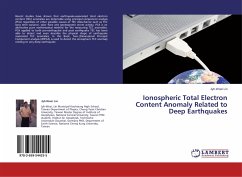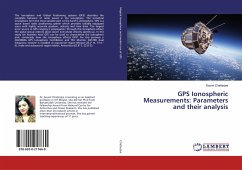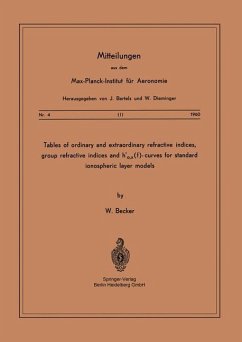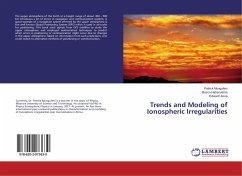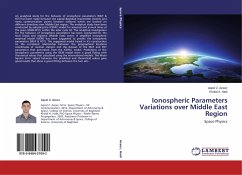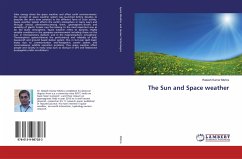
A study of Ionospheric F2-layer Frequency & GPS Total Electron Content
Relationship study between Ionospheric F2-layer Frequency & the GPS Total Electron Content for Equatorial Anomaly Region
Versandkostenfrei!
Versandfertig in 6-10 Tagen
32,99 €
inkl. MwSt.

PAYBACK Punkte
16 °P sammeln!
This book presents the study of relationship between the Total Electron Content (TEC) derived from a Global Positioning System (GPS) receiver and the critical frequency of the F2-layer of the ionosphere in the Equatorial Ionization Anomaly (EIA) region. A practical problem of devising a method to use GPS TEC as a proxy of foF2 was considered for Vanimo, (Papua New Guinea). The study was carried out successfully for southern and northern hemisphere EIA stations. The International Reference Ionosphere (IRI) and electron density profiler NeQuick models were used and the observations were compared...
This book presents the study of relationship between the Total Electron Content (TEC) derived from a Global Positioning System (GPS) receiver and the critical frequency of the F2-layer of the ionosphere in the Equatorial Ionization Anomaly (EIA) region. A practical problem of devising a method to use GPS TEC as a proxy of foF2 was considered for Vanimo, (Papua New Guinea). The study was carried out successfully for southern and northern hemisphere EIA stations. The International Reference Ionosphere (IRI) and electron density profiler NeQuick models were used and the observations were compared with the model outputs. A successive iteration process was applied using the NeQuick model which restricted the TEC to 5% of the GPS TEC value but this could only yield 56% of the foF2 values within a tolerance of ±1MHz. A slab thickness model was also used to get the desired output which resulted in 25% success only. The main features of the equatorial anomaly were obtained and verified from both the observed and model datasets. Another dataset from MIT was also used to compare high and low solar activity conditions



